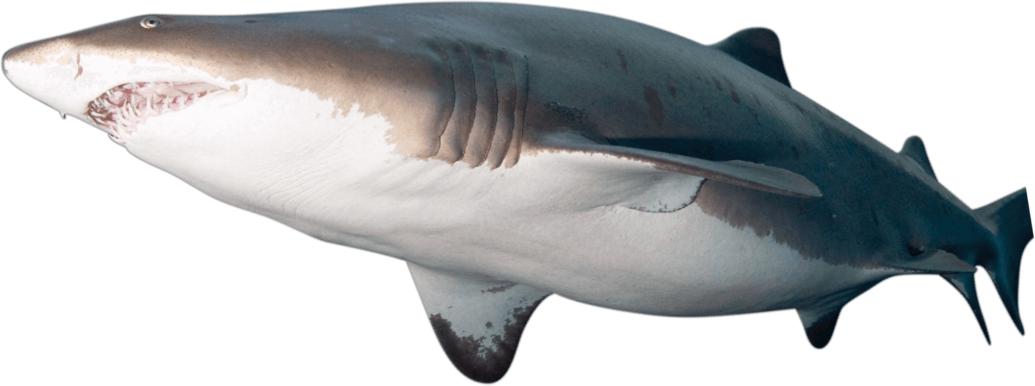Sand Tiger Shark
Carcharias taurus
NTNear ThreatenedRange: Western Atlantic, Eastern Atlantic
Size: 6.5 to 10.5 feet (2.0-3.2 m), 200 to 350 lbs. (91-159 kg)
Despite its menacing appearance, the sand tiger shark is a docile and non-aggressive species. Its toothy smile displays a mouthful of sharp teeth and they enjoy snacking on bony fish, smaller sharks, rays, squid, crabs, & lobsters.





